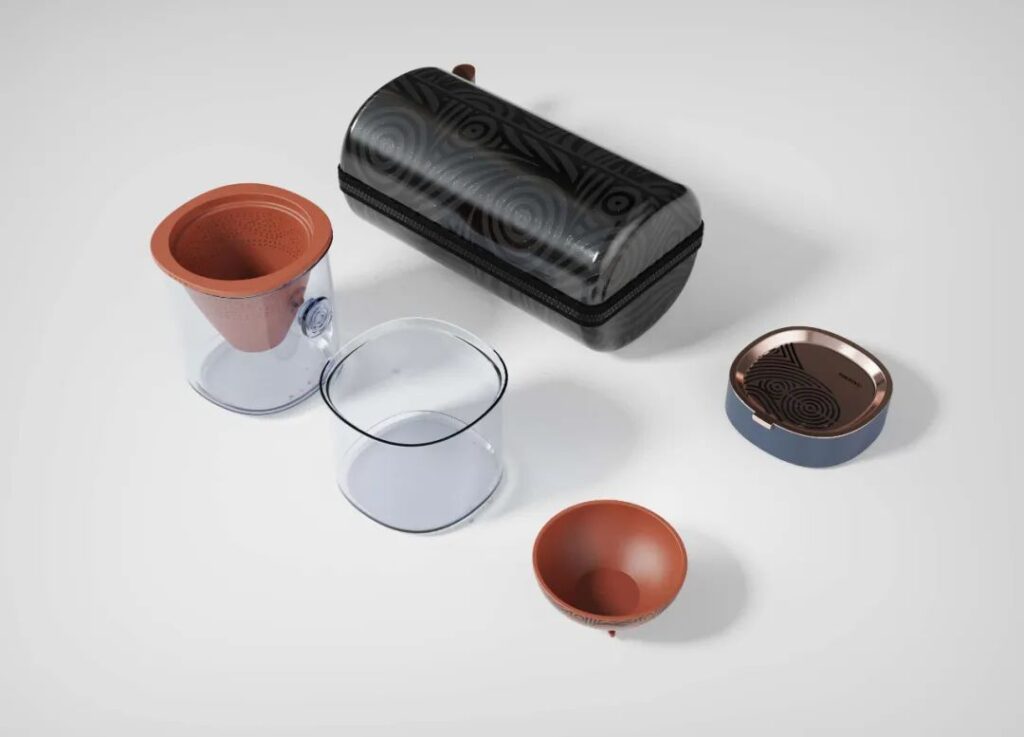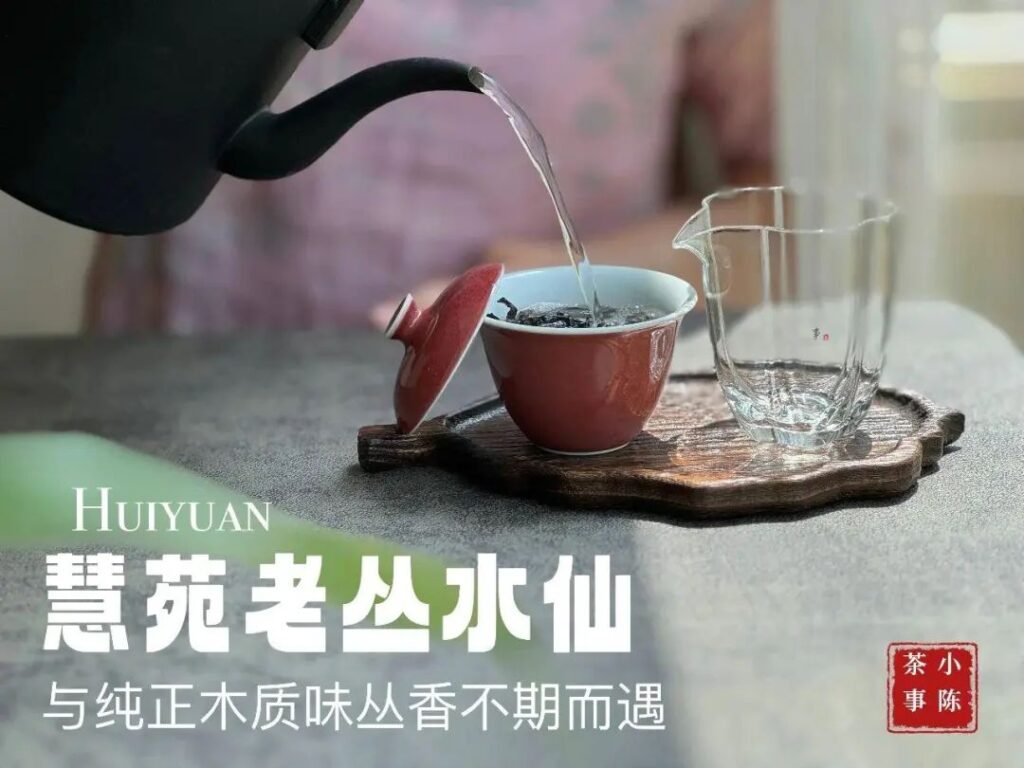Tea ceremony is a lifestyle etiquette that uses tea as a medium, and it is also considered a way to cultivate one’s character. It enhances friendship, beautifies the mind, and improves morality through the processes of brewing, appreciating, and drinking tea, making it a very beneficial ritual. Drinking tea can calm the mind and spirit, which helps to cultivate one’s temperament and eliminate distracting thoughts.
This aligns well with the Eastern philosophical ideas of ‘purity and tranquility’, and also fits with the introspective practices of Buddhism, Taoism, and Confucianism. The spirit of tea ceremony is the core of tea culture and its essence. Chinese tea ceremony widely absorbs the philosophical thoughts and practices of Confucianism, Buddhism, and Taoism, advocating for the inspiration of wisdom through tea drinking, integrating personal emotions with nature, and enhancing one’s inner self while benefiting from the health aspects of tea. Tea practitioners learn tea through sight, taste, smell, touch, and hearing, experiencing the form, color, flavor, and aroma of tea, and quietly comprehending the rhythm and beauty of the processes involved in purifying utensils, boiling water, making tea, and tasting. At the same time, they continuously restrain and improve themselves in various aspects such as utensils, clothing, environment, emotions, behavior, cultivation, and taste. There are three specific forms of Chinese tea ceremony: frying tea, tea dueling, and Gongfu tea. Frying tea: Tea powder is put into a pot and fried with water. The frying tea of the Tang Dynasty is the earliest artistic form of tea tasting. Tea dueling: Ancient literati each brought tea and water, and compared the tea surface soup flowers and tasted the tea soup to judge the quality. Tea dueling, also known as ‘Ming Zhan’, was popular in the late Tang Dynasty and flourished in the Song Dynasty. It first became popular in the Jianzhou area of Fujian. Tea dueling is the highest form of ancient tea tasting art. Its ultimate goal is tasting, especially to absorb the soup flowers on the tea surface, and finally, the tea dueler must taste the tea soup to achieve the best in color, aroma, and taste, which is the final victory of tea dueling. Gongfu tea: Gongfu tea, popular in certain areas since the Qing Dynasty, is the lingering popularity of tea tasting since the Tang and Song Dynasties. Gongfu tea was popular in Tingzhou, Zhangzhou, Quanzhou of Fujian, and Chaozhou of Guangdong during the Qing Dynasty. Later, it also became popular in the Qimen area of Anhui. Gongfu tea emphasizes the skill of drinking. Drinking Gongfu tea can be self-brewing and self-tasting, and especially when entertaining guests, it is more particular. Tea ceremony belongs to Eastern culture. The difference between Eastern and Western culture lies in the fact that Eastern culture often does not have a scientific and precise definition, but relies on individuals to approach and understand it through their own enlightenment. Tea ceremony originated in China. As early as the Tang Dynasty in our country, the term ‘tea ceremony’ was used, which is what the book refers to when it says that the Chinese were the first in the world to regard tea drinking as a way of cultivating one’s character, either in the Tang Dynasty or before. The ‘Fengshi Wenjian Ji’ from the Tang Dynasty records: ‘Tea ceremony was widely practiced, and there was no noble or official who did not drink tea. ‘ This is the earliest existing record of tea ceremony.In fact, Chinese tea culture does not merely satisfy itself with the invention of self-cultivation and the standardization of rituals, but boldly explores the true essence of tea as a health drink. It creatively combines tea with traditional Chinese medicine and other natural ingredients, significantly enhancing the role of tea in medical health care and expanding its development space. This is one of the most practical aspects of Chinese tea culture and the charm that has been valued and loved for thousands of years.
Within the tea culture, tea art is the combination of ‘tea’ and ‘art’. Tea art, which began in the Tang Dynasty, flourished in the Song, was reformed in the Ming, and reached its peak in the Qing, has a considerable historical origin and forms a system of its own. Tea art includes the evaluation of tea leaves, appreciation of artistic techniques, and the enjoyment of a pleasant environment for tea tasting. The entire tea tasting process is a beautiful artistic conception, reflecting the unity of form and spirit, and the cultural phenomena formed during the tea drinking activities. Traditional tea art uses a dialectical and unified view of nature and personal experience to discern issues from the interaction of body and soul. Therefore, in the art, it contains not only the simple dialectical materialism of ancient China but also people’s subjective aesthetic tastes and spiritual sustenance. Tea art mainly includes the following five aspects: First, basic knowledge of tea. To learn tea art, one must first understand and master the classification of tea, the quality characteristics of famous teas, the production process, and the identification, storage, and selection of tea. This is the foundation of learning tea art. Second, tea art techniques refer to the skills and crafts of tea art, including the procedures, key movements, and content explanations of tea art performances, the appreciation of tea’s color, aroma, taste, and shape, and the appreciation and collection of tea utensils. This is the core part of tea art. Third, tea art etiquette refers to the politeness and manners in the service process, including the appearance, reception, and communication requirements and skills in the service process. Fourth, tea art standards. Tea art must truly reflect the spirit of equality and mutual respect among tea people, so there are standard requirements for guests. As a guest, one should demand oneself with the spirit and quality of a tea person and immerse oneself in tea tasting and appreciation. As a server, one must also conform to the way of entertaining guests, especially in tea art galleries, where service standards are an important factor in determining the quality and level of service. Fifth, enlightenment. ‘Dao’ refers to a practice, a path and direction in life, the philosophy of life, and the spiritual container. Enlightenment is the highest realm of tea art, achieved by brewing and tasting tea to comprehend life, understand existence, and explore the meaning of life.In simple terms, the art of tea is an organic combination of ‘tea’ and ‘art’. It is the tea practitioners who, following the rules of tea ceremony, artistically process the everyday habit of drinking tea to showcase the techniques of brewing, steeping, and drinking to both tea drinkers and guests. This elevates the mundane act of drinking tea to an artistic level, enhancing the realm of tea tasting and imbuing tea with a stronger spirit and aesthetic appeal.
Tea art is diverse and full of life’s pleasures, making it a positive way to enrich our lives and elevate our living standards. Additionally, tea art is a form of stage art that requires the close cooperation and reasonable arrangement of people, props, stages, lighting, sound, calligraphy, flowers, and plants to provide tea drinkers with a noble and beautiful experience, and to bring vitality to the performance. Tea art, rooted in the excellent culture of the Chinese nation, has widely absorbed and drawn on other art forms, extending into literature and the arts, forming a Chinese tea culture with a strong ethnic characteristic. Originating in China, tea art is inextricably linked to various aspects of Chinese culture. Good tea comes from high mountains and misty clouds, and is brewed with clear spring water; tea art is not an empty metaphysics but a substantial reflection of the improvement of life’s connotations. Drinking tea can improve the quality of life and expand the field of art. Since ancient times, the four arts of flower arrangement, hanging paintings, tea brewing, and incense burning have been particularly favored by literati and scholars. Tea art is also a refined leisure activity that can relax the spirit, bring people closer together, resolve misunderstandings and conflicts, and establish harmonious relationships. These aspects set higher and deeper demands for us to understand tea art. Tea art is a form of life art. Life is like tea; amidst the hustle and bustle, one can brew a pot of good tea and savor it slowly. Through tea tasting, one enters a process of inner cultivation, experiencing the bitter, spicy, sweet, and sour aspects of life, thereby purifying the soul.

